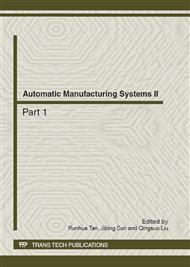[1]
Bollen M H J. Understanding power quality problems: voltage sag and interruptions: IEEE Press (2000).
Google Scholar
[2]
Mcgranaghan M F, Roettger W C. The economics of custom power: IEEE, (2003),P. 944.
Google Scholar
[3]
Woodleyn H, Morgan L, Sundaram A: IEEE Trans on Power Delivery. Vol. 14 (1999), P. 1181.
Google Scholar
[4]
Woodl EY N H: IEEE Power Engineering Society Winter Meeting. Vol. 4 (2000), P. 2864.
Google Scholar
[5]
Silva S M, Eleuterio F A, Desouza R A: Industry Applications Conference Annual Meeting: Vol. 4(2004), P. 2239.
Google Scholar
[6]
Xiujuan Zhang, Chao Yang, Zhi Tang: CSEE(2003)(In Chinese).
Google Scholar
[7]
Hongfa Ding, Shuangyan Shu, Xiangzhong Duan: International Journal of Electrical Power and Energy Systems. Vol. 24(2002), P. 693.
Google Scholar
[8]
Chois S , Lib H , Vilathgamuwa D M: IEEE Power Engineering Society Winter Meeting : Vol. 4(2000), P. 2967.
Google Scholar
[9]
Abisamra N , Sundarm A: Western Electronics Show Convention(1996).
Google Scholar
[10]
Affolter R, Connell B: IEEE PES Transmission and Distribution Conference and Exposition. Vol. 3(2003), P. 937.
Google Scholar
[11]
Nielsen J G, Blaabjerg F, Mohan N: IEEE Applied Power Electronics Conference and Exposition. Vol. 2(2001), P. 1267.
Google Scholar
[12]
Chois S, Lib H , Vilathgamuwa D M: IEEE Trans on Power Systems. Vol.15(2000), P. 51.
Google Scholar
[13]
Xu Xie, Mingliang Hu, Xu Liang: Automation of Electric Power Systems. Vol. 26(2002), P.41.
Google Scholar
[14]
Vilathgamuwa D M, Perera A , Chois S: IEEE Trans on Power Delivery. Vol.18 (2003), P.928.
Google Scholar
[15]
Chuan Yuan, Honggeng Yang: Automation of Electric Power Systems.Vol. 28 (2004), P.49.
Google Scholar
[16]
Chung I Y, Wom D J, Park S Y: International Journal of Electrical Power and Energy Systems.Vol. 25(2003), P.525.
Google Scholar
[17]
Ghosh A, Joshi A. IEEE Power Engineering Review. Vol. 22 (2002), P.63.
Google Scholar
[18]
Lam C S, Ningyi Dai, Wong M C: Automation of Electric Power Systems.Vol.29 (2005), P. 35.
Google Scholar
[19]
Chao Yang, Xiujuan Zhang, Zhi Tang: Science and Technology. Vol.43 (2003), P. 289.
Google Scholar
[20]
Chois S, Li J D, Vilathgamuwa D M: IEEE Trans on Power Delivery, Vol.20 (2005), P. 2289.
Google Scholar


